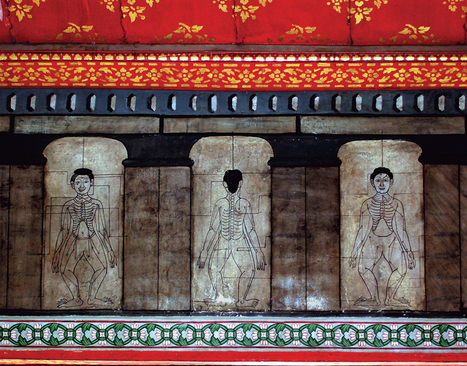Chapter 2 Past and present
| CHAPTER CONTENTS | |
| A brief history | 5 |
| Jivaka Kumar Bhaccha | 6 |
| Thai Massage today | 8 |
A brief history
Thai Massage is one of the three branches of Traditional Thai Medicine. The others are naturopathic (including dietary) medicine and spiritual practices. Traditional Thai Medicine is intimately entwined with Theravada Buddhism, the esoteric and monastic branch of Buddhism practised in Southeast Asia and Sri Lanka. In Thailand traditional medicine is still generally offered under the auspices of the Buddhist monastic community.
It is not known exactly when Buddhism came to Thailand. Some accounts suggest that Asoka, India’s first Emperor, sent missionaries in the second century BC. Asoka embraced Buddhism in response to the terrible cruelty he saw during the conquest of Kalinga. He came to be known as ‘The Prince of Peace’ (Kinder & Hilgemann 1978).
A stone inscription from 1292 AD records the declaration of Rama Khamheng, King of Siam, that Buddhism be recognised as the country’s official religion (Gold 2007). Beyond that little more is known. When the Burmese invaded Thailand in 1767 they destroyed the old royal capital of Ayutthia and with it most historical and medical texts.
In 1832 King Rama III gathered what fragments of the medical texts survived and had them carved into stone and set into the walls of the Wat Pho, the main Buddhist monastery in Bangkok. These carvings comprise 60 figures and are believed to indicate treatment lines and points on the human body with explanatory notes (Fig. 2.1) (Brust 1990).
Jivaka Kumar Bhaccha
Jivaka Kumar Bhaccha was a member of the community (sangha) that gathered around the Buddha 2500 years ago. His story is included in the Vinaya Pitaka, a Theravadin document that records the life of that original sangha and lists the 227 rules governing monastic life.
Stay updated, free articles. Join our Telegram channel

Full access? Get Clinical Tree







